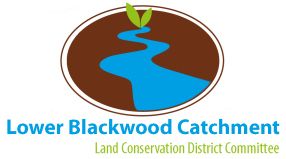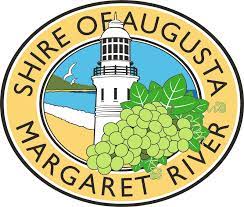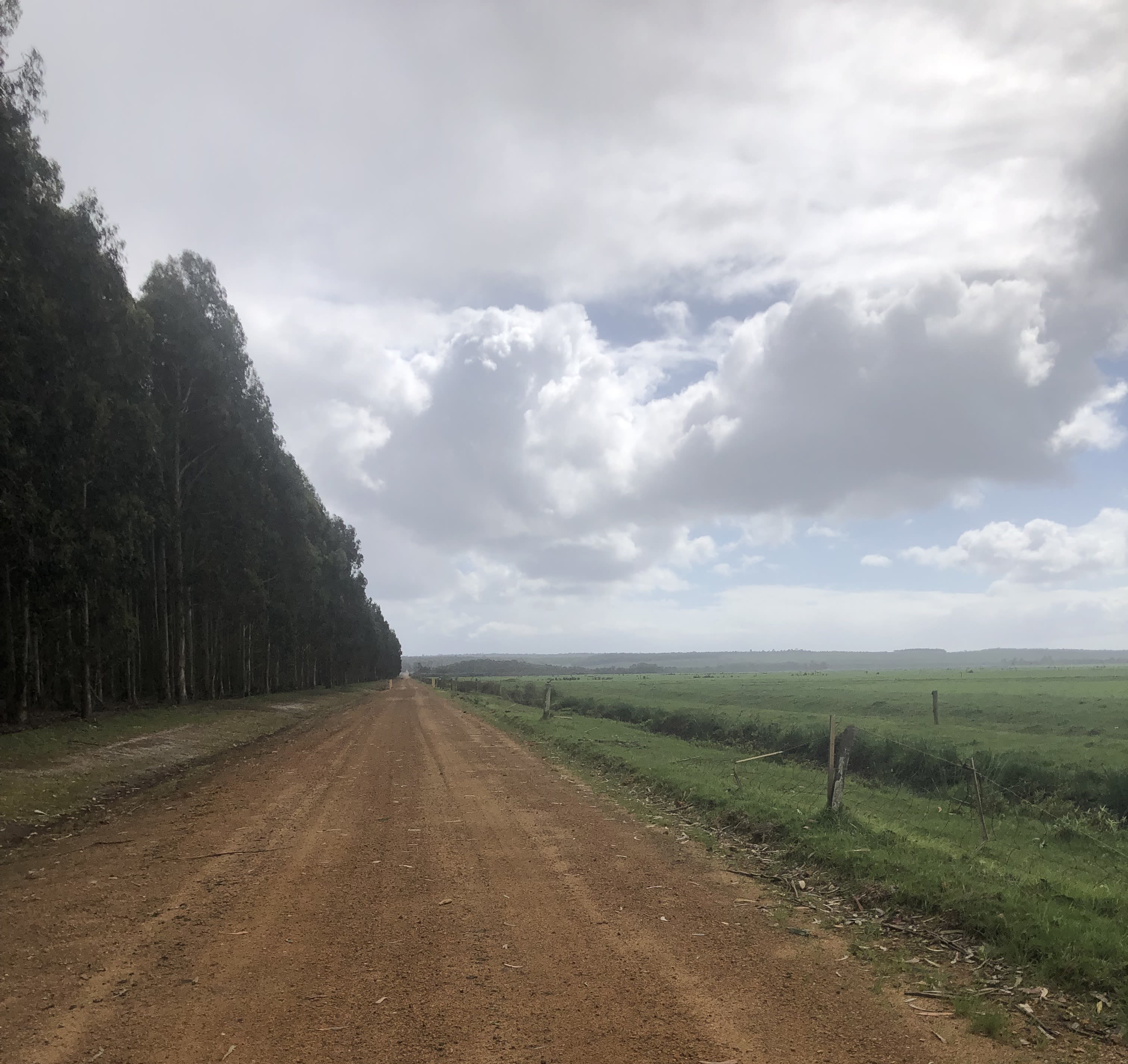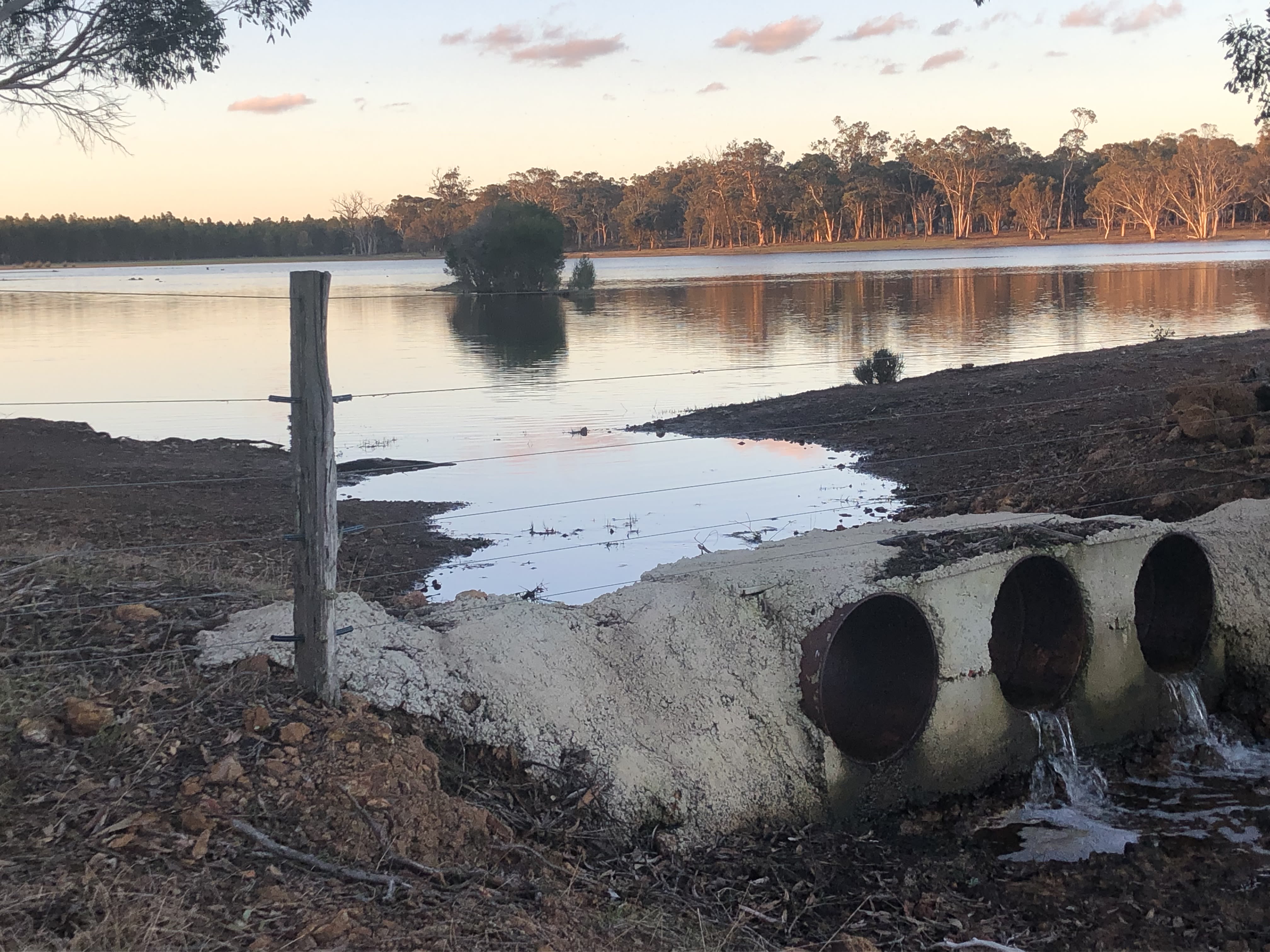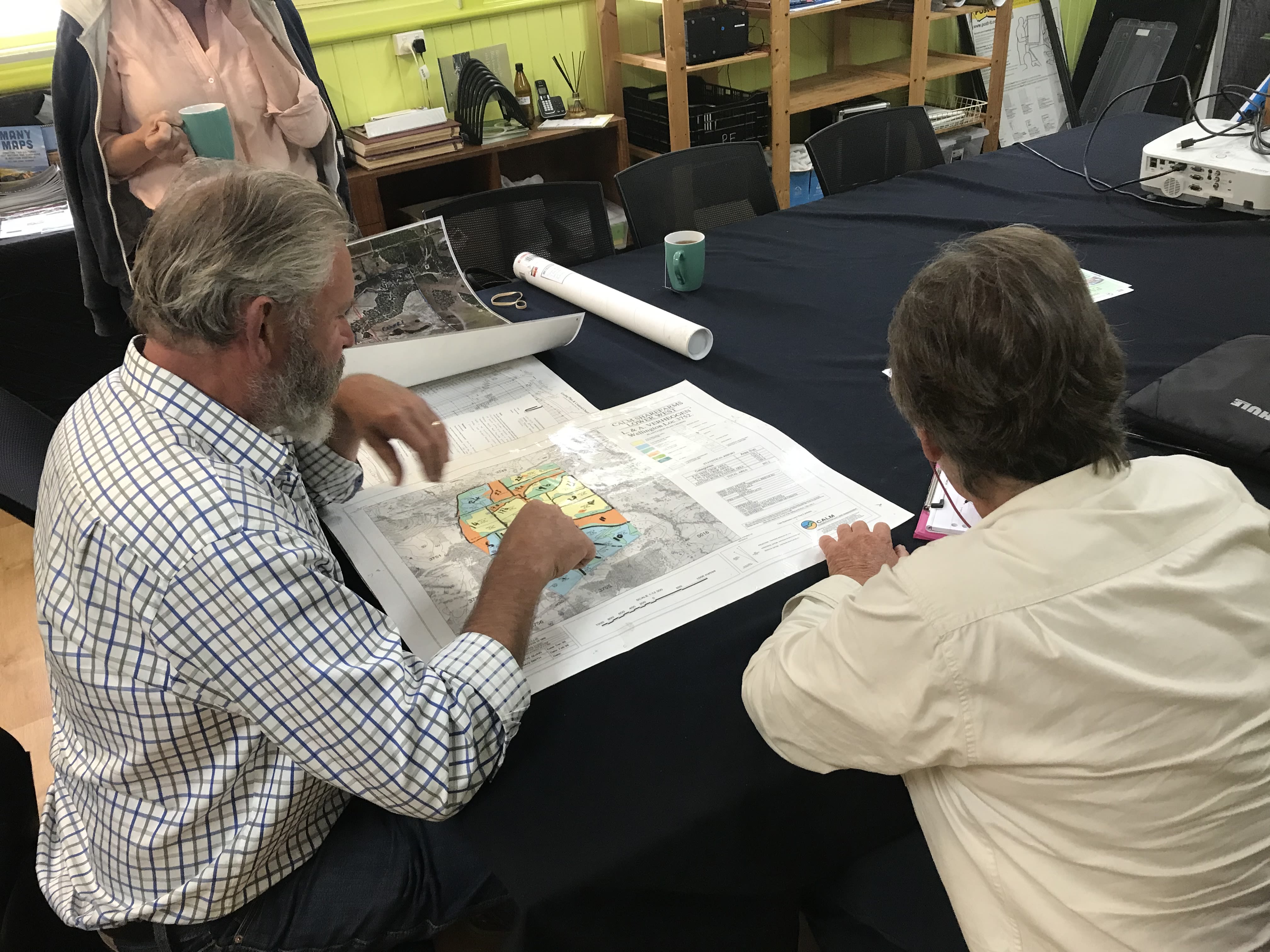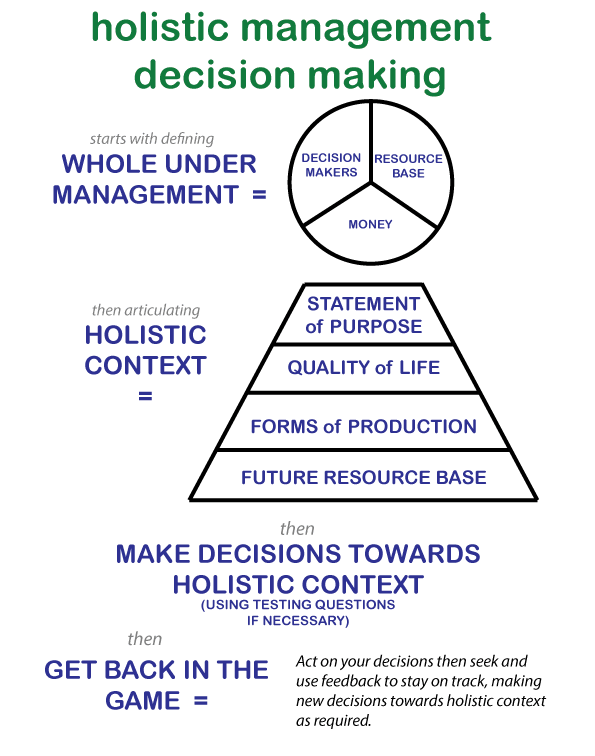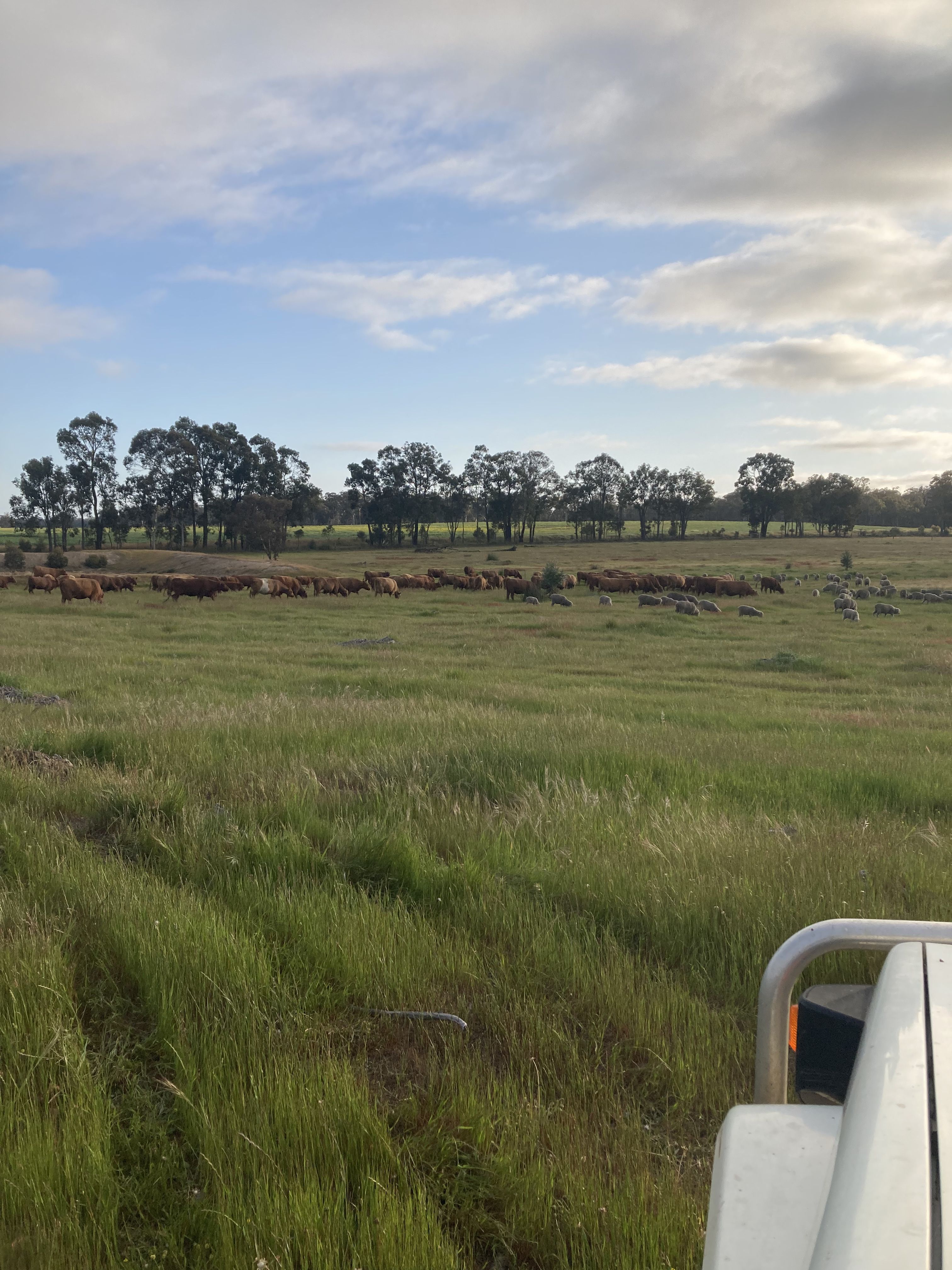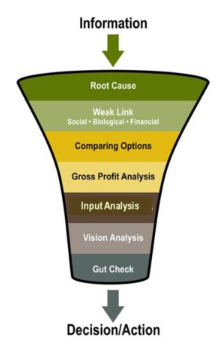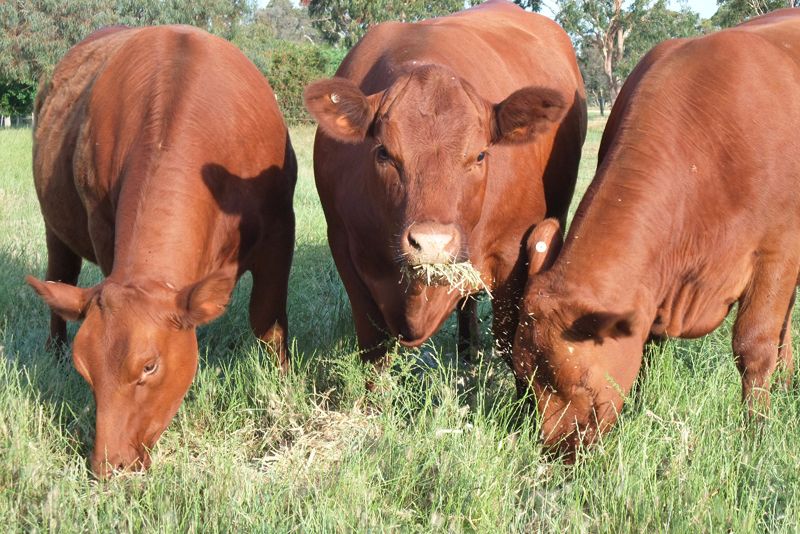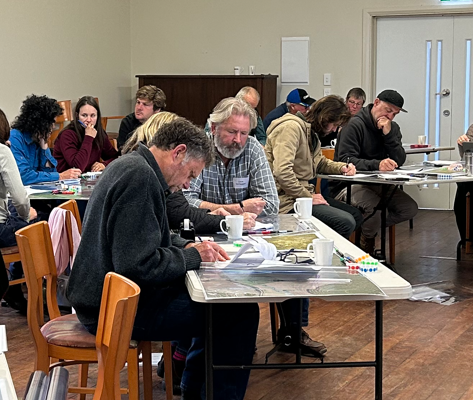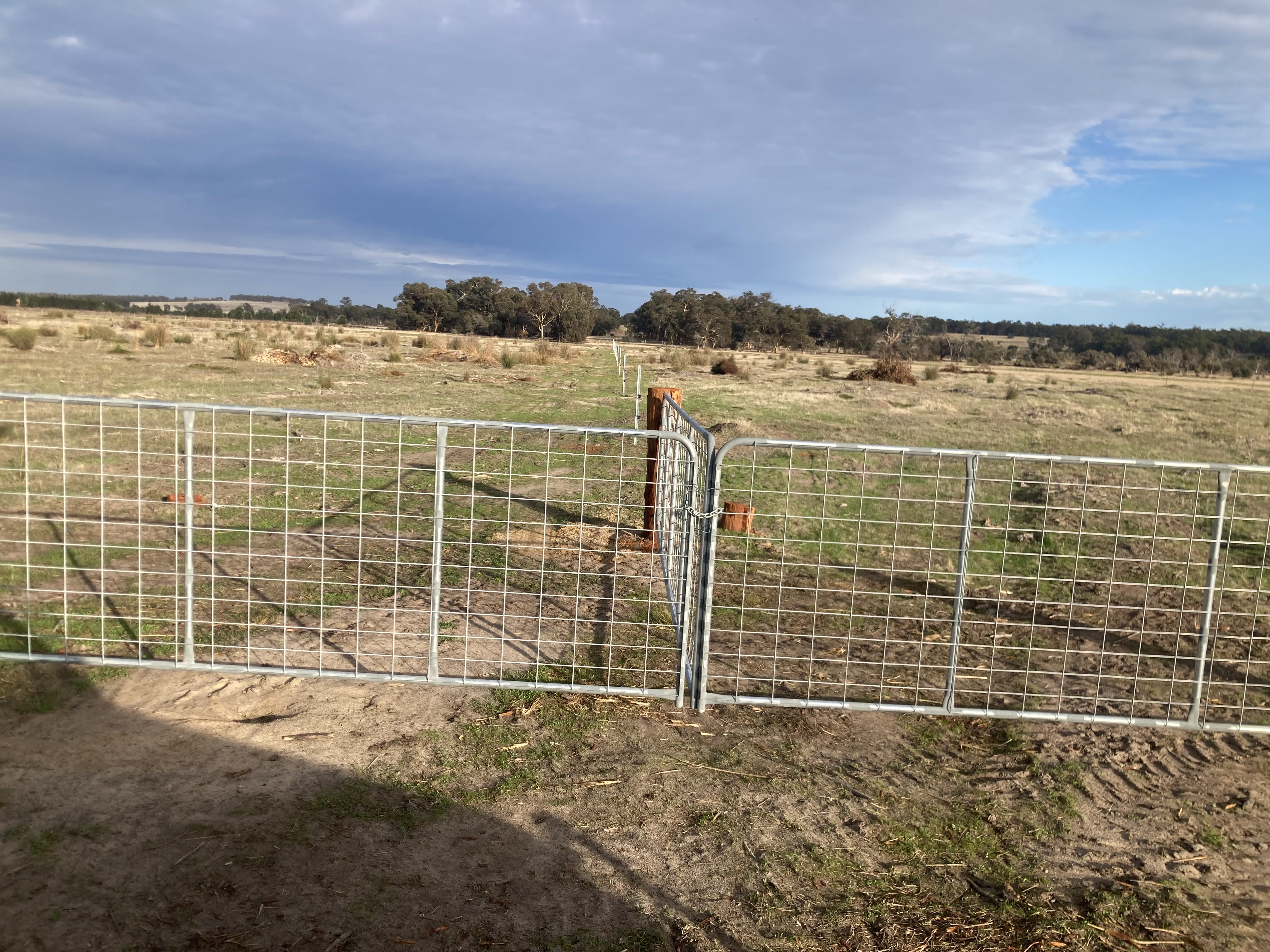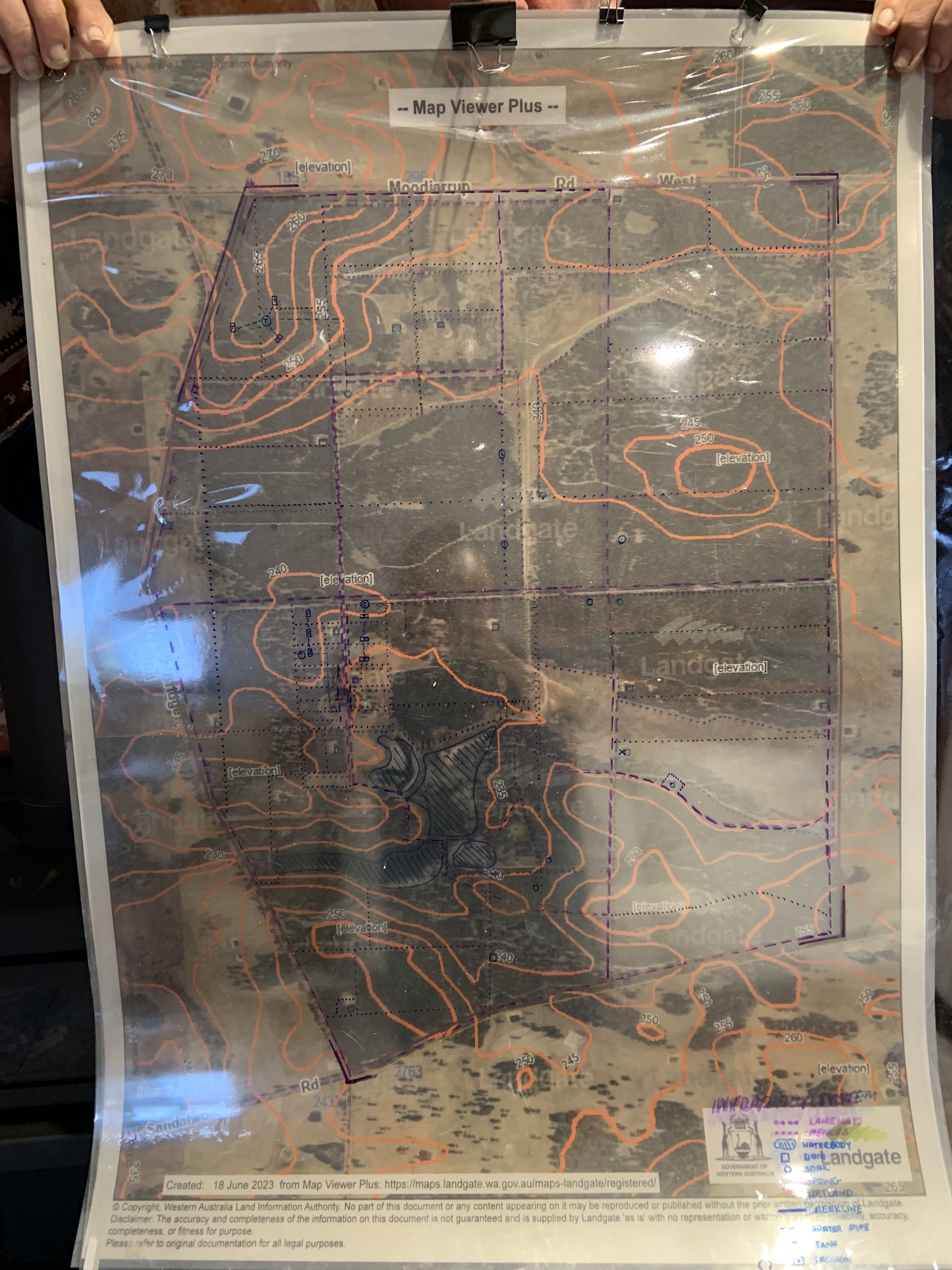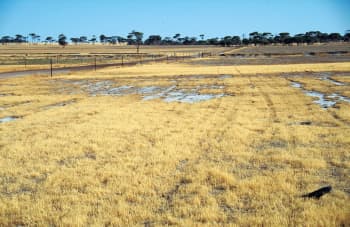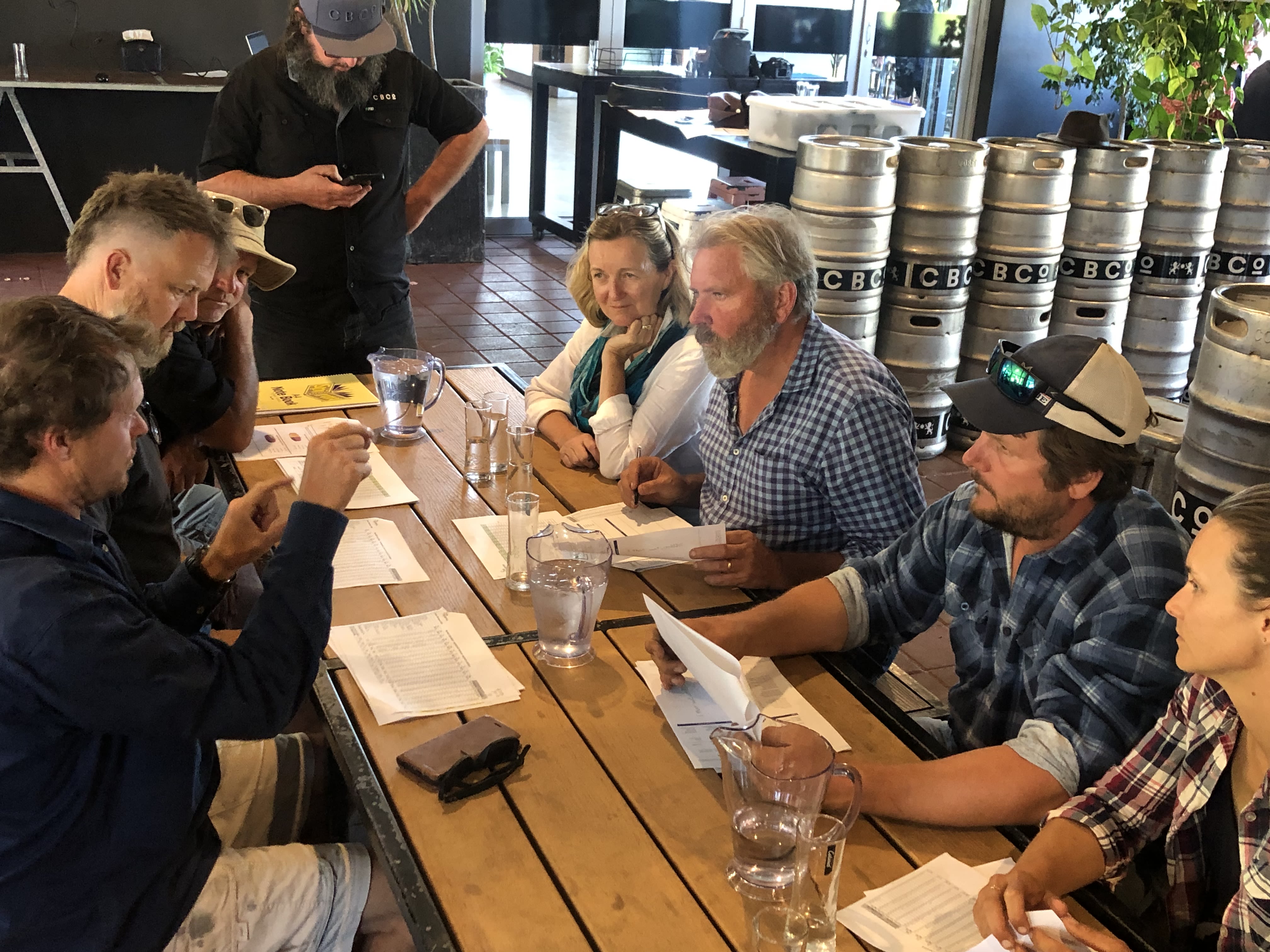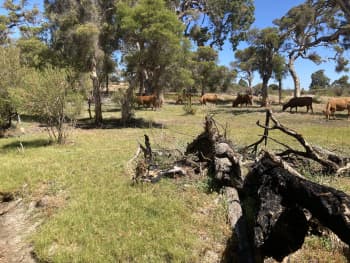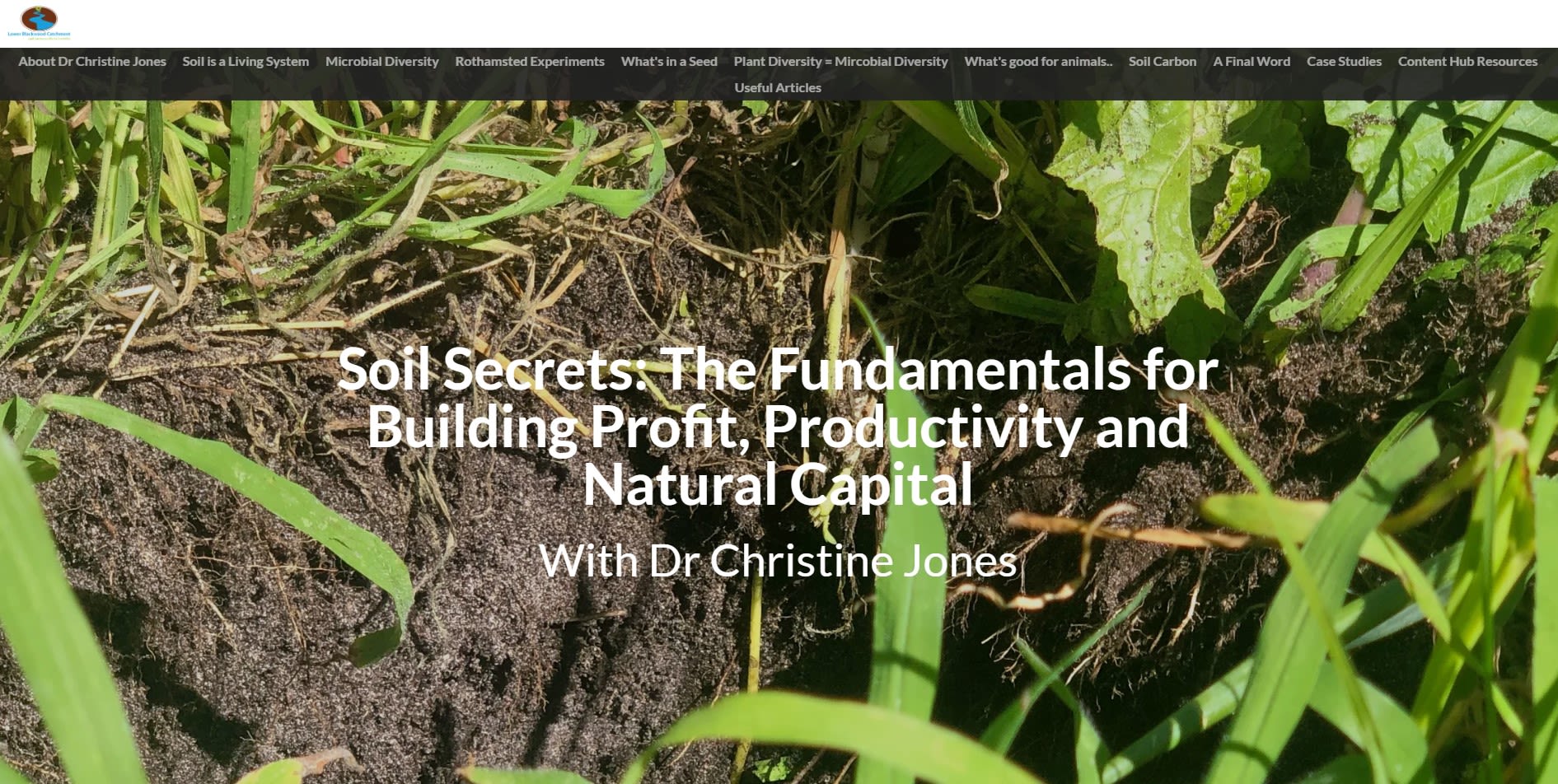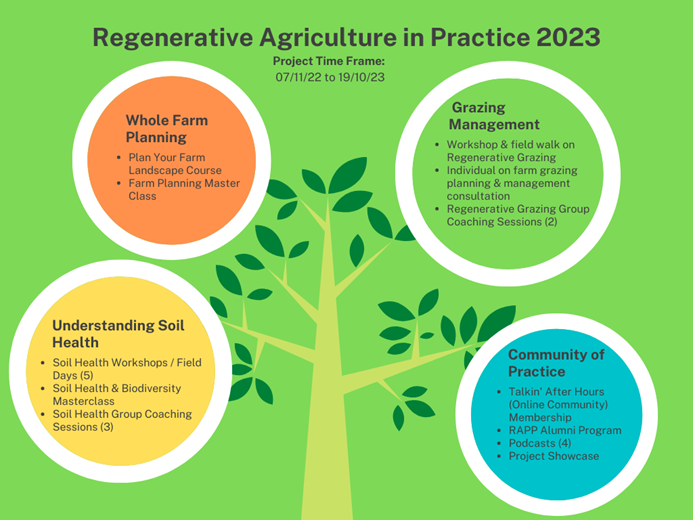Keenan's Block & Wandoo Springs | Case Study
Regenerative Agriculture in Practice Project 2023
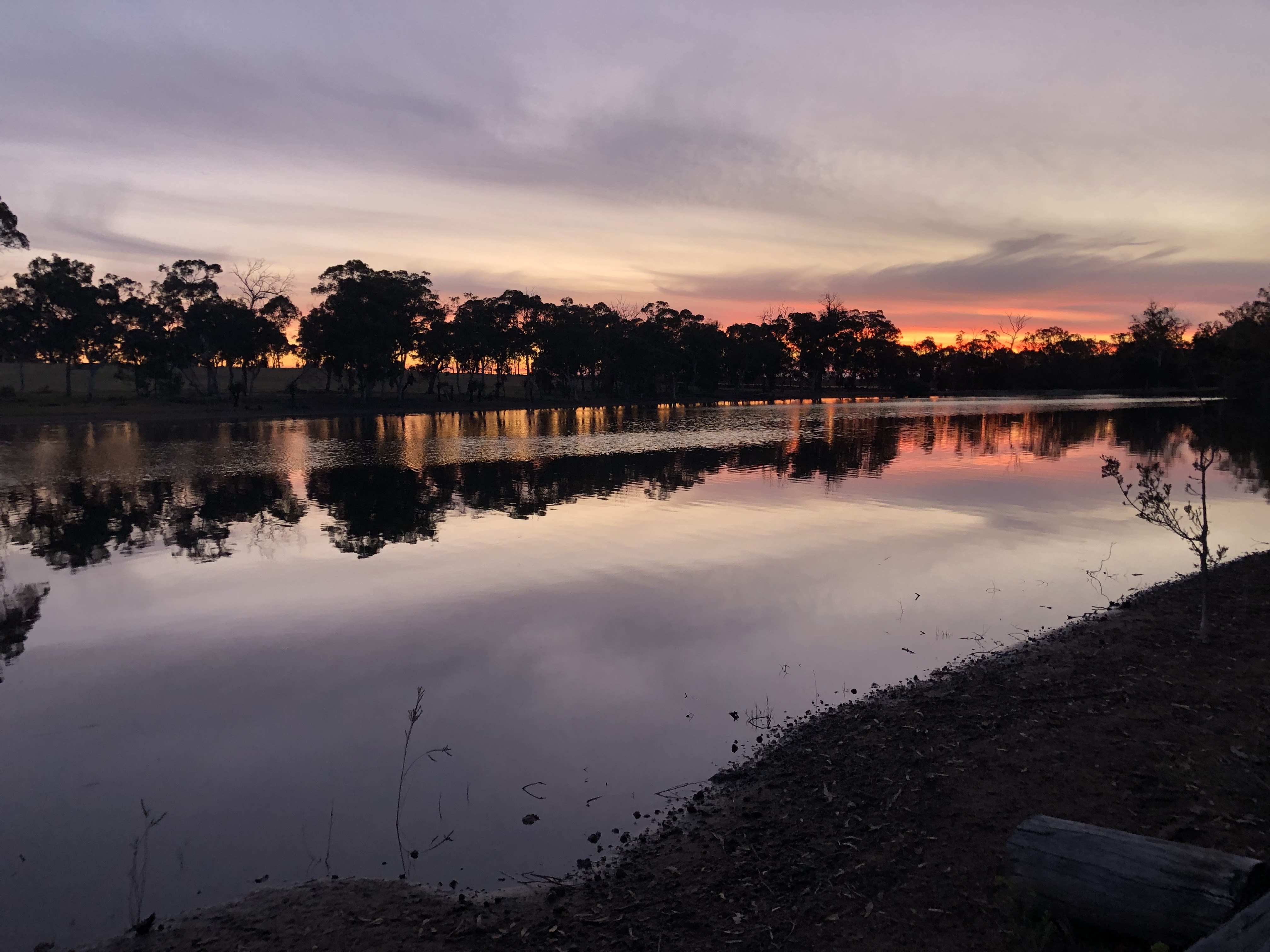
Background
Louis and Anne Verheggen are partners in farms in Boyup Brook and East Scott River. Although most of their current focus is on the Boyup Brook farm, much of the experience they have gleaned through RAPP23 will be applied to their farm in the Scott River in the future.
Louis and Anne are first generation farmers. Louis was brought up in Perth, and although he had occasional interactions with farming families, this was limited and farming wasn't part of his family culture. He qualified as a Petroleum engineer and travelled the world drilling oil wells.
Louis and Anne bought the Boyup Brook farm as an investment in 1999. At the time it was a 450ha blue gum plantation, so was the ideal low maintenance holiday retreat for the family. The farm has always run livestock - initially Friesian steers, then a three-way cross of Red Angus, South Devon and Shorthorn.
The blue gums were harvested 5 years ago, and since then Louis has become a full time farmer.
Farm | Fact File
Name: Keenan's Block
Location: East Scott River, South West Western Australia
Farm Size: 1,200 Ha
Production: Currently under Blue Gums
Soil Profile: Sand over clay and gravel over clay
Landscape: Two-thirds under Bluegums, 200ha native bush, pine trees, gravel quarry, road, access ways and firebreaks
Wildlife: Kangaroos, emus birds, feral pigs, feral deer
Topography: Undulating - approx. 70m between highest and lowest points across the farm.
Water: creek running through lower section of the farm
Main drive at Scott River. Blue gums on left and neighbour dairy on right.
Main drive at Scott River. Blue gums on left and neighbour dairy on right.
Name: Wandoo Springs
Location: Boyup Brook, South West Western Australia
Farm Size: 2000 acres (800ha)
Production: Pasture, 200 Red Angus (beef) and Merino Sheep (wool)
Soil Profile: Sand over clay and gravel over clay
The growing season in Boyup Brook begins around April and ends around October. Over the course of the growing season, Wandoo Springs receives around 600mm of rain. By comparison, in the dry season from November to March, less than 50 mm of rain falls in total.
Climate: This year, the growing season ended early and is expected to last longer than usual, putting pressure on pasture and feed.
Water: 3 winter creeks that converge into one. A dam creating a large 8ha lake
Landscape: 200 ha native bush, pasture
Wildlife: Swans, pelicans, spoonbills, ducks, kangaroos
Infrastructure: Currently 26 paddocks ranging in size from 3ha to 196ha.
Predominant Pasture: Wild Oats
Topography: Rolling hills with approximately 40m between highest & lowest points
Lake at Wandoo Springs – over flow from one section of lake to another
Lake at Wandoo Springs – over flow from one section of lake to another
Motivation for Change
When Louis first bought the farm in 1999 he followed his engineering instincts. Soils were tested and fertilisers added to fix what was missing. He naturally followed advice from one of Anne's cousins (a long time farmer) who strongly recommended chemicals and drenches, with stock being drenched multiple times through the year. But it just didn't feel right.
Another of Anne's cousins was a biodynamic farmer. He used drenches too - but the combo of garlic, chilli and apple cider vinegar seemed a much gentler approach. The couple decided to stop using drenches and looked for more natural ways to raise their livestock.
Soon, cow pats started to disappear. While the manure from the chemically drenched cows could stay around for years, the undrenched dung became host to dung beetles and other decomposers and vanished into the soil.
"Although it said that the drench was worm friendly I don't think ours were reading the labels. All our worms died." - Louis
Louis and Ann followed the biodynamic principles for around 11 years. The next twist in their journey was a demo day at a farm just south east of Boyup Brook, where they met Brian Wehlburg who was hosting a 2-day introduction to Holistic Management.
This was a big step towards adopting regenerative agriculture principles, and a step closer to meeting the Lower Blackwood team.
Traditional Owners
The Noongar people have also had a significant influence on Louis' farming principles. Realising he was seeking 'connection', he spent time with Noongar people on his land, learning from their culture of respecting and caring for the natural landscape. He values his role as part of the natural cycle and recognises his obligation to working with it, not against it.
Practice Changes

Holistic Farm Management & Grazing
"Holistic Management is the single biggest practice change we have taken on." Louis
Louis believes that the main way to improve soil is through grazing management and is currently in the throes of reducing paddock sizes to improve his rotational grazing capacity.
He has based his schedule on the stock having 3 days in a paddock (following Dr Judi Earl's advice that with the right stock density to match the area you can't overgraze a paddock in 3 days), and with 60 paddocks it will take 180 days to get around the farm. That means each paddock will only be grazed for 6 days in every year.
This leaves paddocks with time for recovery. Different grasses need different recovery times, a process further affected by seasonal variations. But the recovery time allows for the addition of grasses (fescue, Phalaris, chicory and wheatgrass) to improve soil health.
If the paddock has recovered and is going into over-rest, stock can be moved sooner. Although some paddocks won't be optimally grazed, recovering paddocks will be protected.
Louis reviewing their Grazing Plan with Dr Judi Earl
Louis reviewing their Grazing Plan with Dr Judi Earl
Mixed mob of cattle & sheep grazing at Wandoo Springs
Mixed mob of cattle & sheep grazing at Wandoo Springs
Matching stock levels to carrying capacity
Two weeks ago, Louis and Anne ran 300 Red Angus cattle. This week, they run 200.
The couple reduced stock numbers when they calculated that the amount of grass they will have from now to the end of the dry season won't support their stock.
They were faced with a choice: keep the stock and buy in feed, or reduce their stock and rely on the standing feed they have on-farm.
For Louis, the solution was clear - the numbers showed that reducing stock numbers was the best way to go. But that didn't soften the blow of having to lose a third of his herd.
"Buying feed isn't actually sustainable. Stocking levels have to be matched to the production level of the farm." - Louis
Over the past year they have worked closely with Regenerative Grazing experts Dr Judi Earl and Brian Wehlburg. Both have clear strategies for measuring feed capacity, and extrapolating out how much feed is needed for livestock over the year.
Louis is also keen to point out that this has a flow on effect for his farm planning. He works off a 3-year planning program, but with swift changes like this, plans have to change too.
Although he may be reducing stress levels by reducing stock levels and reducing worry about buying in expensive and potentially scarce feed, he now needs to completely reassess his farm and financial plans for the next three years.
"The process means that we can be a bit less emotional about our planning. We have tools that give clear figures about what works and what doesn't, so we can make educated decisions based on facts, not feelings."
Stock Lines
One of the additional concerns about reducing stocking numbers is the loss of the gene pool that has been years in the making. However, Brian and Judi point out that although you are selling off genetics, if you sell off the oldest and keep the youngest, there is the ability to keep the longest lines of genetic refinement on the farm.
Red Angus Cattle
Red Angus Cattle
Whole Farm Planning
Although Louis and Anne had been to farm planning workshops in the past, the granular detail and visual layering of the plans they developed with at the RAPP23 Whole Farm Planning days gave them a fresh view of their farm.
Working on farm maps with other RAPP participants
Working on farm maps with other RAPP participants
Reminders that roads should be on high country, and following the natural ridges to reduce erosion were timely and valuable. Physically layering acetates over an aerial farm map was a huge help in planning infrastructure, fences, paddocks, water points and raceways with a clear view of the landscape's creek lines and topography.
New fencing implemented after farm planning.
New fencing implemented after farm planning.
Louis & Anne's Farm Landscape Map of Wandoo Springs
Louis & Anne's Farm Landscape Map of Wandoo Springs
Challenges to Change
Salinity: 2 of the 3 creeks have significant salt levels and bring salt onto the property. Some areas have significant Salt Scald - up to 4ha of bare earth with salt deposits on the surface.
However, Louis has noticed that animal impact has improved this over time and there's now less than 1ha that's showing signs of Scald.
Eroded, shallow soils: Louis didn't realise how shallow and weak his soils were. Years of overgrazing & synthetic fertilising had left the soils struggling, and building them back up is still a work in progress.
Lack of fencing, money, materials, labour, infrastructure...
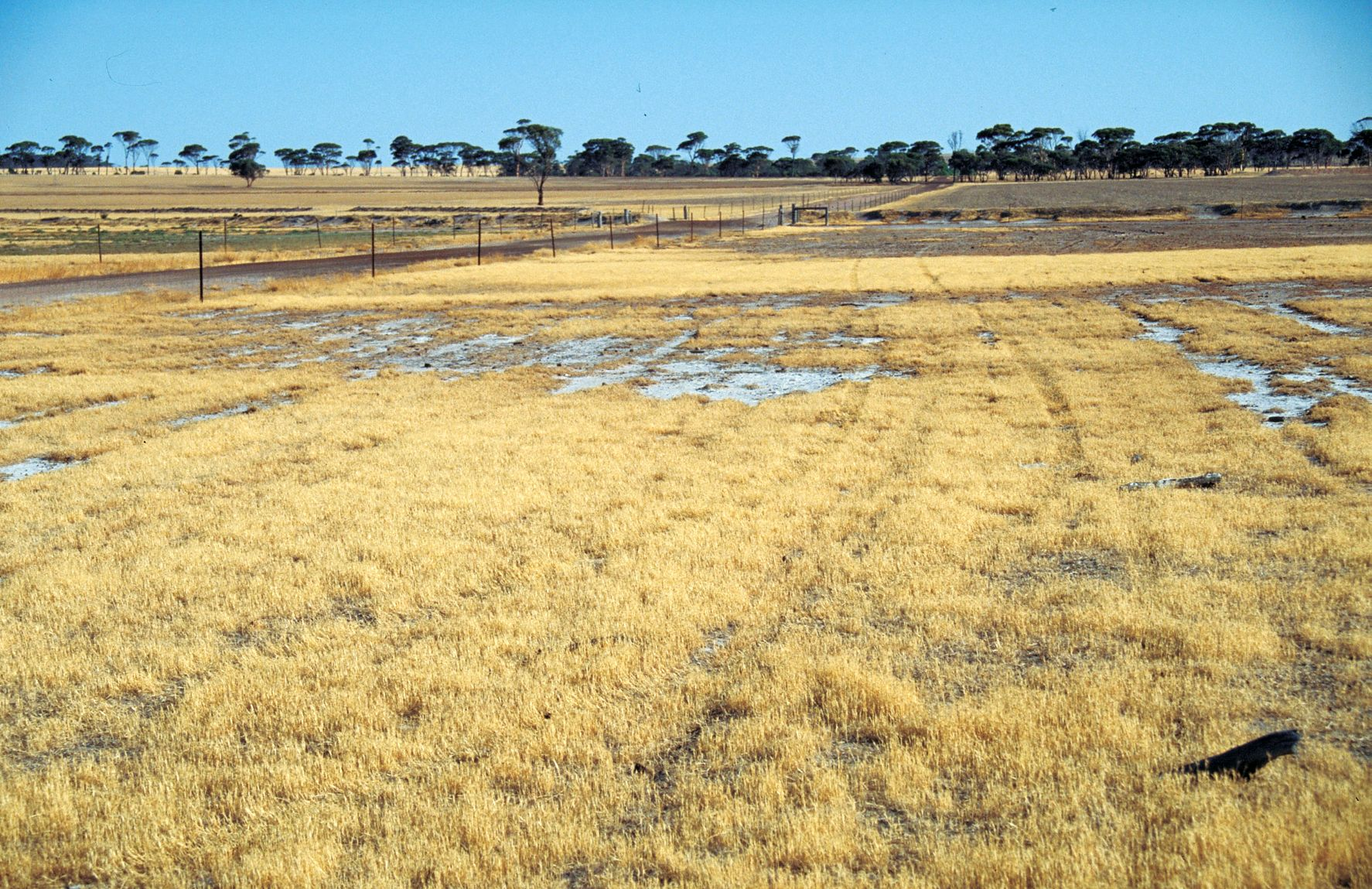
Advice From Louis & Anne

Holistic Management
Reframe your thinking and take a more holistic approach. Consider your farm now and in the future, what it can support and what it can't. And don't be afraid to change your plan.
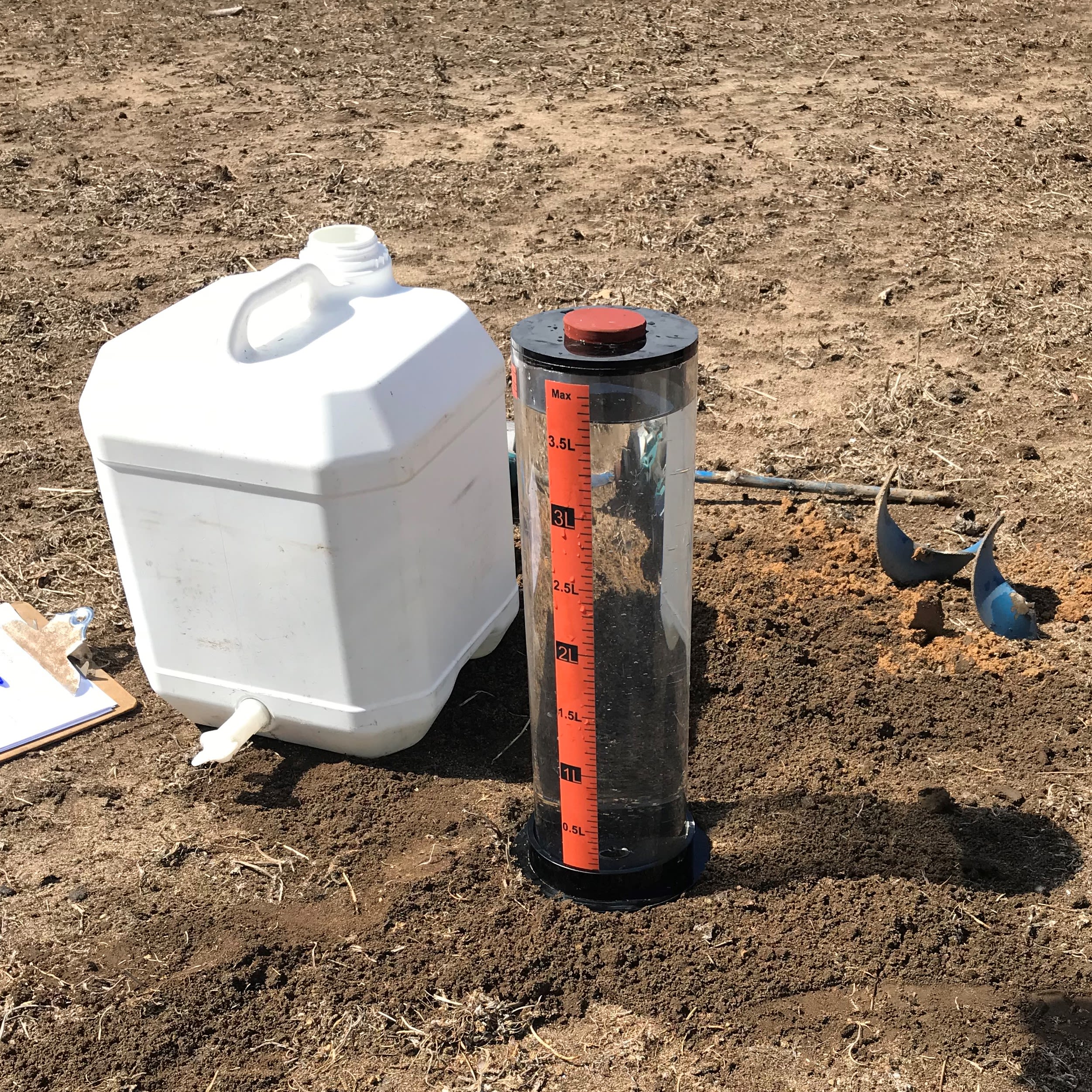
Learn About Soil
Good soil is the heart and soul of your farm. Learn about how to keep it healthy.
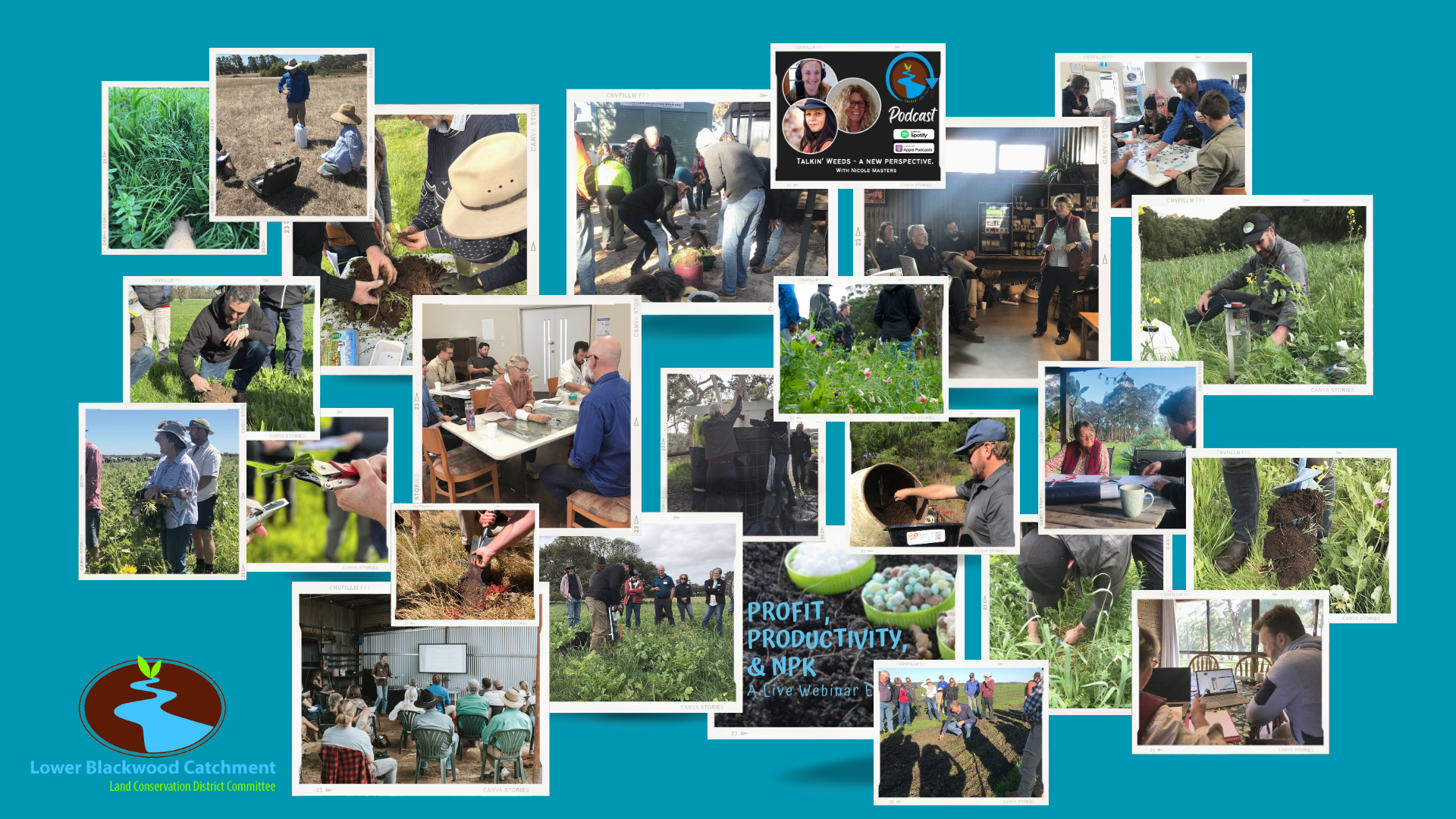
Lower Blackwood Landcare
Lower Blackwood Districts Landcare Committee is a hub of information and advice. Join them and learn everything that you can.
3 pieces of advice from Louis.
Louis and Anne reviewing their soil test results with other RAPP participants
Louis and Anne reviewing their soil test results with other RAPP participants
Where to now?
For Louis, the farm has to be financially viable. It doesn't have to be producing as much as it possibly can, but the goal is to produce a reasonable profit after costs - but not at the cost of the land.
Louis runs a triple bottom line accounting process, so the farm has to be responsible financially, environmentally and socially, so despite the need for a robust financial position time and energy will be spent on regenerating the native bushland and encouraging flora and fauna, as well and supporting the local community as much as possible.
But Louis recognises that it's an evolutionary process. The goal is to continue to stick to the regenerative agriculture principles, building soil health and growing healthy animals.
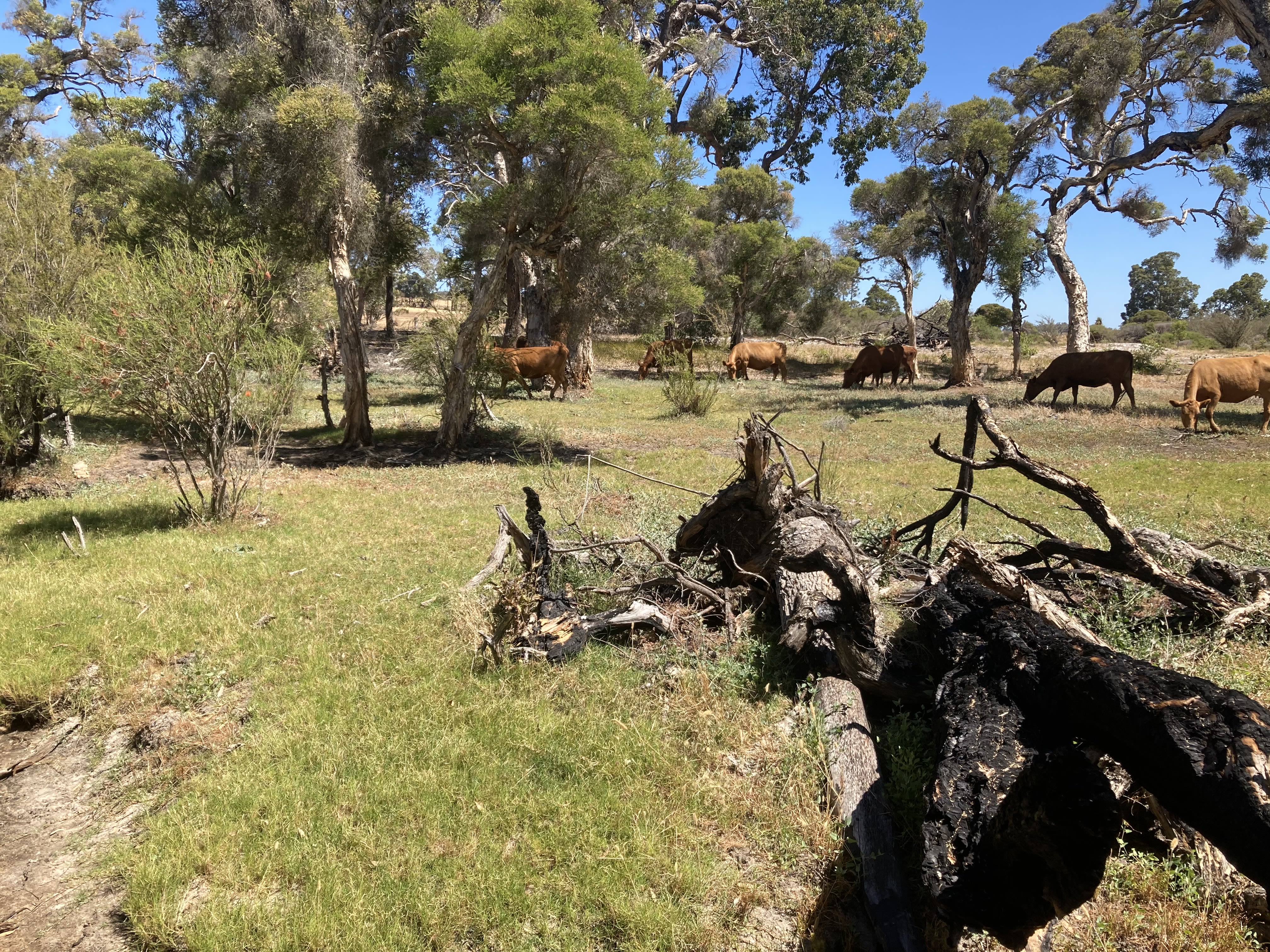
Useful Resources
Podcasts, webinars and knowledge hubs
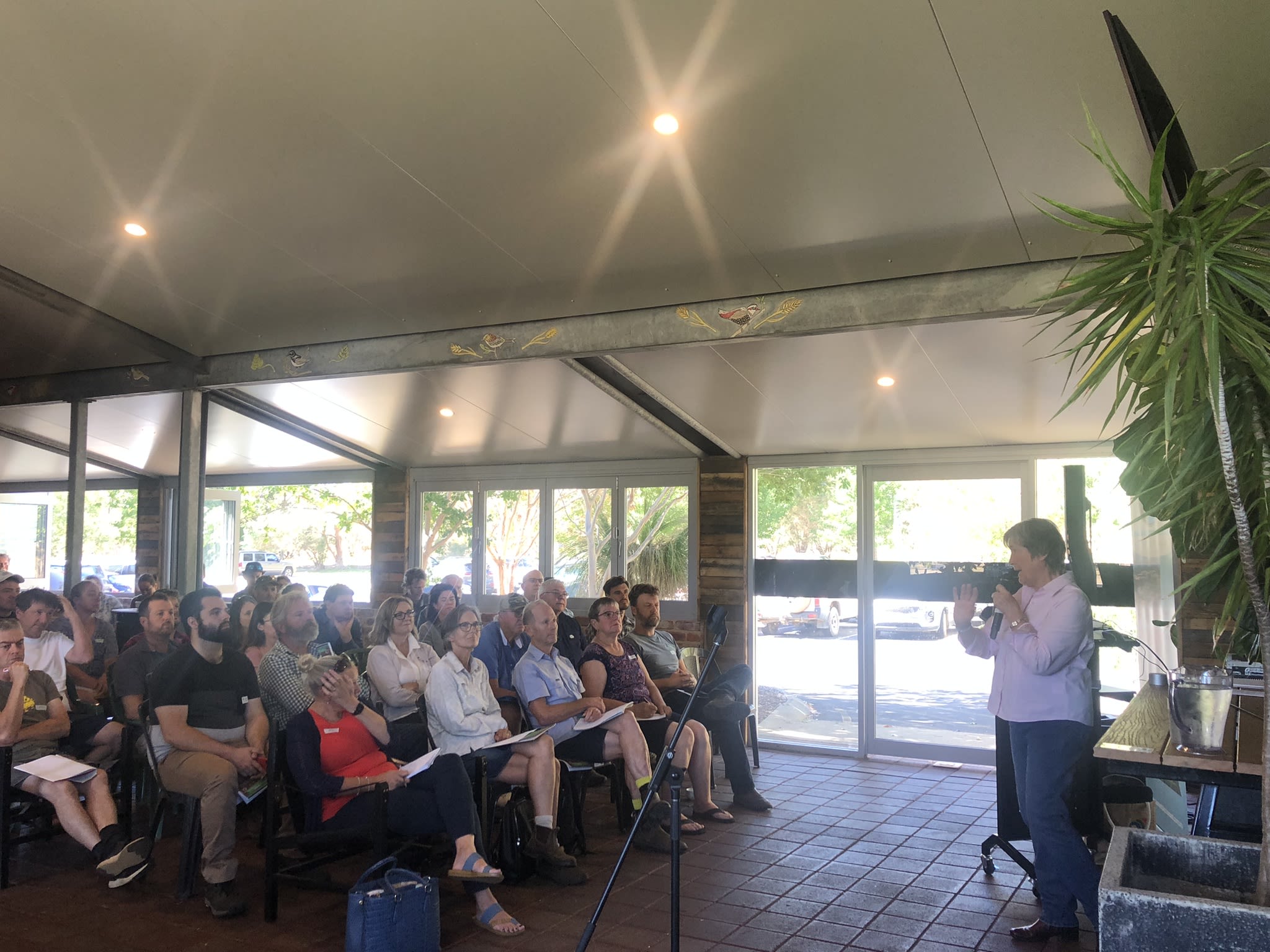
In this Talkin' episode Jo & Kate talk with internationally renowned soils ecologist Dr Christine Jones on the secrets that make healthy soils tick and the soil as a living system - including a dive into the ‘liquid carbon pathway’ – what it is, why we need it, how to help it and how to avoid hindering it.
In this Talkin' episode we talk to Holistic Grazing expert Dr Judi Earl on the principles of grazing management and how grazing livestock can be used to regenerate their land.
In this Talkin After Hours Episode Jo & Kate chat to Fred Provenza, Professor Emeritus, Dept. Wildland Resources, Utah State University. Our conversation delves into this fascinating research with a particular focus on the impact of plant diversity on livestock health.
In this episode of Talkin’ After Hours Jo & Kate tapped into Dr Judi Earl’s PhD on Pasture Ecology to talk grass, and also how land managers can enhance the condition and productivity of their land through improved ecosystem function, and more effective utilisation of their pasture.
Soil Secrets Knowledge Hub
A deep dive into the world of soil health, plant diversity and the importance of the microbiome.
In this live webinar, pasture ecologist and regenerative grazier Dr Judi Earl, discusses the critical skill of pasture assessment & it’s place in the business of grazing & building soil health, and how it can influence pasture & animal production targets. Judi also walks the audience through how to assess pasture & undertake a feed budget, and introduce participants to planning grazing around assessment of pasture and feed requirements.
In this Talkin’ After Hours live webinar, we explore the different data that can be collected from multi-species pastures & crops to assess how they are performing in the key performance areas of; Soil Function and Fertility, Pasture Quality and Quantity, and Local Ecosystem Health.
This live webinar with Dr Judi Earl explores how grass grows and can best be utilised is a critical component of any successful grazing operation . This knowledge, when implemented with other key grazing management tools – graze period & pasture recovery, stocking rate & density can lead to significant productivity & profitability improvements while at the same time improving the health of the land.
This Talkin’ After Hours webinar explores how to "see" your landscape using landscape thinking, and the science and practice behind landscape regeneration and rehydration.
Presented by David Hardwick from Soil Land Food, this practically focused webinar will deepen your understanding of how your farm landscape works & the practical steps you can take to improve your farms productivity though improving its natural capital..
What is RAPP 2023?
Regenerative agriculture is not a ‘one size fits all’ approach to farming or land management. It is generally considered to be a holistic approach to restoring soil and ecosystem health, addressing inequity, and leaving our land, waters, and climate in better shape for future generations.
RAPP 2023 was designed to encourage farmers and landholders to consider regenerative farming principles. It was structured to build on learnings from current and previous projects, providing returning participants and alumni the opportunity to continue to grow and develop their skills further, whilst also providing opportunity for new landholders interested in learning and adopting regenerative farming techniques.
More information and details of the program and schedule here.
RAPP 2023 was opened up to the wider Augusta Margaret River Community – through our partnership with the Lower South West Growers Group with 50% of the project places going to LSWGG members who live within the Augusta Margaret River Shire but reside outside of the Lower Blackwood catchment.
This case study also forms part of the Lower Blackwood LCDC's project 'Scott River Action Plan Implementation Strategy and On-ground Action'. This project is supported by funding from the Western Australian Government’s State NRM Program.
